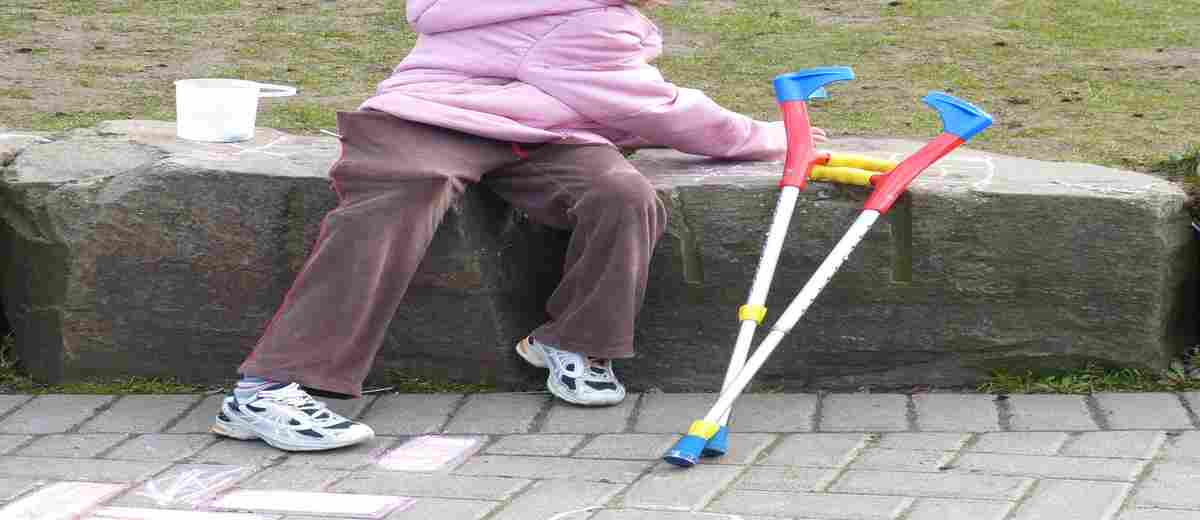What to Learn When Using Forearm Crutches
Learn How to Avoid Punching the Ground
If you’re new to using forearm crutches, there’s a good chance you punch the ground when you walk. How do you tell? Each step makes a loud smacking sound. If you’re walking correctly, you should only hear a gentle click (or nothing at all) when you step. To avoid punching the ground, you need to be aware of your posture and gait as you walk. If you’re leaning too far forward or reaching too far with the crutch, you’ll be more likely to punch the ground. You should be using the crutch to adjust your balance and gait as you move into each step. If you’re throwing the crutch out to catch yourself as you fall, you’re not using the crutch correctly. Punching is one of the most important habits to break when using crutches. If you don’t, you’ll be much more likely to have elbow and shoulder pain in the future.
Learn How to Fall
It’s an unavoidable fact: you’re going to fall when using forearm crutches. The key is to learn how to fall. Make sure your crutch cuffs are sized to your forearms. The openings at the front of the cuff should be narrow enough to let you let go of the crutch and not drop it. But the cuffs shouldn’t be so narrow that you arm can’t escape during a bad fall. If your arm stays in the crutch during a fall, there’s a good chance that you’ll damage the crutch or even break your arm. If you feel yourself starting to fall, the safest thing to do is to lower yourself to the ground. From there, reset your stance by slowly standing up. This is a lot less stressful than trying to catch and balance your entire body. If you do fall, focus on getting the crutches parallel to your body. This will keep stress of the fall off of your wrists and transfer it to your forearms and shoulders.
Learn How to Two‐Step
If you use two forearm crutches, your gait has four points: crutch‐foot‐crutch‐foot. If you’re looking to improve your speed and spend less energy, you should switch to a two‐point gait. To switch to a two‐point gait, bring the crutch and your foot forward at the same time when you take a step. When you walk, you should only feel two points of contact with the ground. If you stick to the two‐step technique, you’ll be a lot faster and spend a lot less energy when walking.
Learn How to Swing
This is a more advanced technique that some folks might not be able to use. But, I wanted to mention it here because—if you can use it—it’s life‐changing.
To swing, move both crutches forward and then swing your legs through the crutches. If you’re doing it right, your arms should end up slightly behind you as your feet touch the ground.
It’s an incredibly difficult move that takes a lot of practice to get right. You have to find the balance between how far forward you move your arms and how far past your arms you let your legs land. The farther forward your legs land, the more ground you can cover. But, it increases the risk of a fall, and falls that happen while swinging sting like a motherfucker. But if you can pull it off, you can move massive distances with very little effort. How far? I’m talking an average of three to five feet per swing. You could cover a fifty foot hallway in as little as 10 steps. Also, each swing builds your momentum. So, with a long enough straightway you could almost reach running speed.
Learn When To Quit
Forearm crutches take a toll on the body no matter how good your technique is. Over time, your elbows and shoulders are going to wear down and your falls are going to get worse. When that happens, it’s time to consider switching to a wheelchair. I know that walking gives you a lot more flexibility, but it’s not worth your health and safety.
But it doesn’t need to be an all‐or‐nothing transition. After all, wheelchairs come with crutch holders for a reason. Regardless of what you decide to do, make sure you talk it over with your doctor first.
